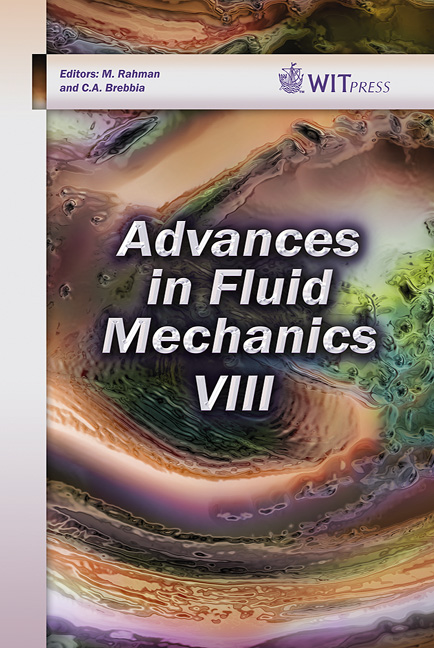Airfoil Cascades With Bistable Separation Control
Price
Free (open access)
Transaction
Volume
69
Pages
13
Page Range
331 - 343
Published
2010
Size
5,989 kb
Paper DOI
10.2495/AFM100291
Copyright
WIT Press
Author(s)
V. Tesař
Abstract
To accommodate varying flow rate and shaft speed conditions, the airfoils arranged in cascades in hydrodynamic machines (turbines, pumps) should be variable. Mechanical articulation is expensive and complex, reducing reliability. The author investigated separation control by jets issuing from fixed stator blades shaped so that the flow past them is switched by short control-jet pulses between two alternative regimes differing in the resultant exit flow angle. Although applicable widely, in the tests the stator cascades were mostly used in simple rotor-less devices operating as a vortex-flow restrictor. Experiments were supplemented by extensive numerical flowfield solutions. Keywords: separation control, airfoil cascade, Coanda effect. 1 Introduction: the role of airfoil cascades Cascades, the periodic systems of airfoils, e.g. Scholz [1], are essential components of hydrodynamic machines, such as pumps or turbines. In these two machine types, energy conversion in one direction takes place, e.g. mechanical output is produced at the expense of decreasing hydraulic energy. The conversion actually usually involves two cascades, a fixed stator cascade and the other on the rotor connected with the rotating shaft. The energy transfer between the fluid flow and the mechanical work takes place in the rotor cascade. The stator (sometimes missing in machines that have to be cheap) either directs the flow into the turbine rotor or, in a pump or blower, converts the kinetic energy gained by the fluid in the rotor into the pressure rise. More complex conversions take place in machines with a pair of rotor cascades, each on its shaft (usually each also having its corresponding stator cascade). One of them has the role of a
Keywords
separation control, airfoil cascade, Coanda effect





